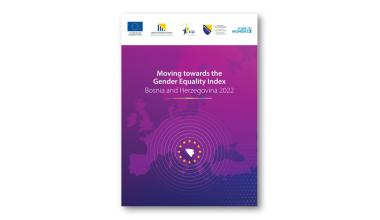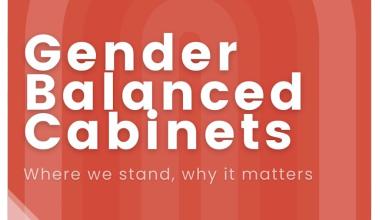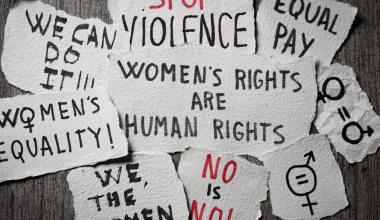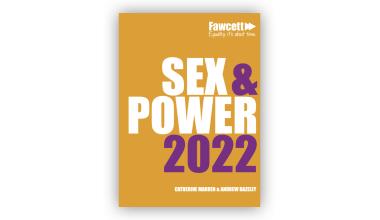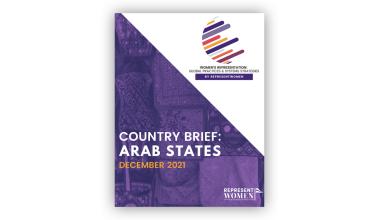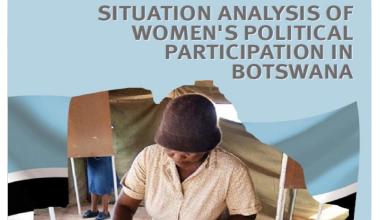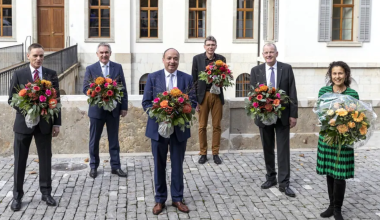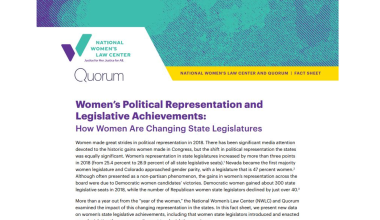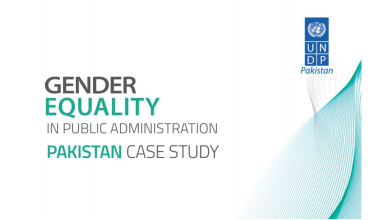Women's Leadership
Main navigation
Countries all throughout the world struggle with providing equal opportunities and positions in regards to women when compared to their male counterparts (Brennan & Elkink, 2015). The People’s Republic of China is not an exception to this trend. In order to combat gender inequality in politics, a quota for women cadres was introduced in 1995. This would ensure that at least one woman holds a head or deputy position in regional governments (Jiang et al, 2023). Despite this quota, women in China still struggle to participate in politics. This statement will be supported by these following arguments; (1) The society and culture in China view women as subordinate, thus lacking support and belief in women when in leadership and political positions, (2) The few women that do end up in positions in government struggle to receive prestigious promotions compared to their male counterparts; and finally (3) In order to attain these promotions these women need to outperform and display similar characteristics to their male colleagues in order to attain similar positions. This issue is important to understand in order to see whether mere gender quotas are sufficient in solving gender inequality in politics or are there other factors we as a society must willingly work to fix.
Click here to read the full article published by Modern Diplomacy on 6 February 2024.
Image source: Modern Diplomacy
Women’s underrepresentation at all levels of government is a persistent problem in the United States. RepresentWomen’s research shows that although we have made progress towards parity, this progress is slow and inconsistent, meaning we are unlikely to reach gender balance within our lifetimes. Increasing and sustaining women’s leadership in elected office requires us to remove the barriers women candidates and legislators face. This drives our research at RepresentWomen to identify the barriers and system-level solutions we can implement to create a more representative, gender-balanced democracy.
Click here to read the full article published by LA Progressive on 22 November 2023.
Image by LA Progressive
The Gender Equality Index developed by the European Institute for Gender Equality (EIGE) in 2013, is recognised in the European Union as an important tool for analysing the state of gender equality in a society as well as comparing current trends and the current situation at the European Union (EU) level. Since 2016, the Agency for Gender Equality of Bosnia and Herzegovina within the Ministry of Human Rights and Refugees of Bosnia and Herzegovina together with the Agency for Statistics of Bosnia and Herzegovina have been engaged in activities that have led to the development of a Gender Equality Index for Bosnia and Herzegovina. The Gender Equality Index for Bosnia and Herzegovina 2022 presents the full index scores for two full domains, Knowledge and Power and the partial index scores for the domains of Work and Health. With the development of this report, Bosnia and Herzegovina will for the first time be able to rely on a statistically legitimate, objective and up-to-date statistical tool for the comparison of the state of gender equality in the country wth countries in the region and in the EU. The combined efforts of the Agency for Statistics of Bosnia and Herzegovina and the Agency for Gender Equality of Bosnia and Herzegovina within the Ministry for Human Rights and Refugees of Bosnia and Herzegovina, under the invaluable guidance of EIGE and supported by UN Women and financed by the European Union, have resulted in the development of this Gender Equality Index.
Click here to access the report.
Across Kenya, local conflicts driven by diverse factors have one thing in common: they’re increasingly being mediated by women. From ethnic tensions to land disputes, some of these conflicts stretch back decades; remaining unresolved despite the lasting instability and violence they create among communities. So women are stepping up to end longstanding strife through local dialogues and outreach, approaches male-dominated leadership has not always been willing to take. But in order to build lasting peace, they need support from both their communities and the state—which some are receiving, and many are not.
Old conflicts, new harm
In the country’s western region, longstanding tensions are driving new security risks in the neighbouring counties of Kisumu and Nandi. Their predominant ethnicities mirror the tribal background of the two leading presidential candidates in this year’s election, and the border region has been identified as a hotspot for elections-related violence.
Click here to read the full article published by UN Women on 24 October 2022.
After national news coverage of a COVID-19 mask requirement controversy in Dodge City, Kansas in December of 2020, Mayor Joyce Warshaw received numerous threats such as “Burn in hell”; “Get murdered”; and “We’re coming for you.” Fifteen days later, Mayor Warshaw resigned saying that she and her family no longer felt safe.
Four important questions arise from the circumstances in which Mayor Warshaw and other mayors find themselves.
- How prevalent is violence against mayors from the public?
- Are there gender and race-based differences in violent experiences of mayors?
- Is the violence experienced by mayors causing them to rethink their service?
- What are the wider implications to representation of exposing public servants to abuse and violence? Will fewer people, especially women and women of color run, for and stay in office?
This research seeks answers to these questions.
Click here to access the report.
More than 100 years after women gained full citizenship rights through the 19th Amendment, women are still under-represented in government. While it is widely known that no woman has become president, it is not only the highest executive offices where women have not had access: women also face barriers at the state level.
Even in 2022, the vast majority of state cabinets are dominated by men. Cabinet members hold a vital position of power: running state agencies and serving as trusted advisors to the governor, helping them make important decisions. In nearly all states, most, if not all, cabinet members are appointed by the governor.
Click here to access the report.
WARNING: PROFANE LANGUAGE
The fabricated sex videos posted online purportedly of Aika Robredo and Tricia Robredo, daughters of Vice President Leni Robredo, are among the recent cases of disinformation circulating in cyberspace that are framed in the vitriol of misogyny. The attack on the young Robredos is obviously an attempt to damage their mother’s bid for the presidency. Many are shocked but not surprised, given the increasingly heated campaign in which the only female candidate is perceived to pose a formidable threat to the nine other presidential aspirants, all male. That the disturbing fakery was not exactly unexpected indicates the alarming yet taken-for-granted consequence of any form of political engagement by women – both in the real world and in virtual space.
This analysis is premised on the observation that misogyny – the intense prejudice against and contempt for women – has become more ferocious in cyberspace in recent years, particularly against those critical of President Rodrigo Duterte, and now during the lead-up to the 2022 elections. This report analyzes a relatively small but significant sample of the appalling number of misogynistic memes, posts, and comments that fan the flame of misogyny, with an equally sickening number of likes and shares from like-minded users, from 2015 to 2020. The following will be discussed as I work through the argument that cybermisogyny violates human rights. It is a disruption of peace, an affront to dignity and equality, and a threat to safety and security. It jeopardizes women’s right to work. As it tends to silence women, cybermisogyny undermines democracy.
Click here to read the full article published by The Daily Guardian on 22 May 2022.
Political gender equality is a central pillar of democracy, as all people, independently of gender, should have an equal say in political representation and decision-making. In practice, democracies are generally better at guaranteeing gender equality than most non-democratic regimes. According to International IDEA’s Global State of Democracy Indices, 41 per cent of democracies have high levels of gender equality, while this is the case in only two of the world’s authoritarian regimes (Belarus and Cuba). The democracies with low levels of gender equality are also exceptional (only four, all weak democracies - Iraq, Lebanon, Solomon Islands and Papua New Guinea). Low levels of gender equality are much more common in non-democracies – more than one third of them fall into this category.
Despite more than half the countries in the world being democracies of some form, levels of political gender equality have not kept pace with democratic progress. In 2022, only 26 per cent of legislators in the world are women, according to the Inter-Parliamentary Union. At the current rate, gender parity will not be achieved until 2062, according to International IDEA’s estimate. The proportion of women heads of state is even lower. In 2022, only 19 countries in the world have women in the highest office of executive power. Of these, all except four are democracies. Moreover, as global democratic progress is threatened by rising authoritarianism and democratic backsliding, fragile levels of gender equality, further weakened by the pandemic, are at risk of more setbacks, as gender is increasingly used as a weapon in such processes.
Click here to read the full article published by International IDEA on 7 March 2022.
Fawcett's Sex and Power 2022 Index is a biennial report which charts the progress towards equal representation for women in top jobs across the UK. Yet again, the report reveals the pace of change is glacial in the majority of sectors and shows that women are outnumbered by men 2:1 in positions of power.
Women of colour are vastly under-represented at the highest levels of many sectors and alarmingly, they are missing altogether from senior roles such as Supreme Court Justices, Metro Mayors, Police and Crime Commissioners and FTSE 100 CEOs.
Click here to download the report.
RepresentWomen's Arab State Brief reviews the extent to which women are represented in Arab countries, the history of Arab independence and revolutions - and their impact on women's rights and representation; and country-specific information that covers the history of systems reforms and their impact on women's political rights and representation in the region.
Click here to read the full report.
New Zealand was the first country in the world where women won the right to vote and it’s now a leader for gender parity in politics.
Following the October 2020 elections, Prime Minister Rt. Hon. Jacinda Ardern leads the most diverse government in New Zealand’s history. Today there are more women, people of colour, LGBTQ+ and indigenous MPs than ever before. This diversity is reflected in the 20-person Cabinet, of which eight members are women, five are Māori, three are Pasifika, and three are from the LGBTQ+ community. In New Zealand, the government now better reflects the diversity of its population, and it is forging a path for other nations to follow.
Click here to read the full article published by IPU.
With less than a decade to go to 2030, the deadline for the Sustainable Development Goals, women constitute just 11% of MPs and 18% of councillors in Botswana: well below the gender parity target and among the lowest proportions in Southern Africa.
This situation analysis of WPP in Botswana is part of the consortium's work and aims to provide a comprehensive overview of the state of women's participation in political decision making at all levels, including in political parties, the Independent Electoral Commission (IEC) and the media.
Accelerating women representation in political decision making requires an inter-sectional approach involving government, civil society, the media, academia, the private sector, youth and men. The upcoming Constitutional Review- the first since independence in 1966 - provides a unique opportunity to re-write herstory in Botswana; review the electoral system with a gender lens, and adopt the special measures that have proven necessary in every country in the world that has succeeded in increasing WPP. The time is indeed now!
Click here to access the analysis.
Kamala Harris, Kirsten Gillibrand, Amy Klobuchar, and I all had better campaign win-loss records than any of the leading men. But the question was never whether a man could be elected. Despite our stronger records, it was always, “Can a woman win?” —excerpt from PERSIST by Elizabeth Warren (Metropolitan Books, May 2021).
“Why doesn’t she smile more?” “Could you see yourself getting a beer with her?” “Do people like her enough to win?” Every election cycle, questions like these become a common refrain when a woman—or more than one woman—runs for office. These inherently sexist questions come with revealing misogynistic expectations in politics, but also have real electoral consequences.
Women candidates are scrutinized and picked apart based on assumptions about their lack of appeal to voters. This constant debate about electability is detrimental to women’s candidacies and U.S. politics as whole, as it focuses on the quagmire of a candidate’s image rather than their policy positions. Men don’t need to be liked to be “electable”—women do.
What Does “Likability” and “Electability” Mean?
Likability is a key component of electability along with establishing a candidate’s qualifications. Often seen together, likability and electability refer to how a candidate is perceived by a voter and whether or not that voter believes they can win an election.
Click here to read the full article published by MS Magazine on 24 May 2021.
Fifty years after getting the right to vote, women are better represented in the Swiss parliament than ever. In a ranking of 191 countries worldwide, Switzerland is in 17th place. But this is deceptive: at the local level, representation is still low.
On February 7, 1971, Swiss men decided by referendum to let women have say in Swiss politics. The federal elections on October 31, 1971, were the first in which women could vote as citizens or stand as candidates; 11 women made it into the House of Representatives, giving them a proportion of 5.5%, and one woman took one of the 42 seats in the Senate.
What has happened since? Have Swiss women been able to take their rightful place in national politics over the past 50 years?
The ‘women’s’ election
The most recent federal parliamentary elections, held in October 2019, went down in history as the “women’s” electionExternal link. More women than ever were elected to the two houses of parliament. With a proportion of 41.5% women in the House of Representatives, the country now ranks 17th in a ranking of 191 states worldwide.
Several societal and political factors led to this success, such as the #MeToo movement and protests against the sexism of ex-United States President Donald Trump. In Switzerland, womens’ strikes and mounting climate change activism also led to more women being elected.
Click here to read the full article published by Swiss Info on 3 February 2021.
South Asia has elected its share of prominent women politicians. But what has that meant for gender equality and women’s rights on the ground?
With Kamala Harris assuming office as the United States’ first female vice president this month, conversations have been renewed over the role of women leaders in politics – particularly in South Asia, given Harris’ Indian heritage. South Asia has seen many female politicians and even elected them as heads of government, from Indira Gandhi – the first and only woman prime minister of India – to Benazir Bhutto – the first female head of state of a Muslim country and twice premier of Pakistan – despite being home to largely patriarchal and male-dominated societies. These women leaders, however, have strong dynastic backgrounds that boosted their political careers. There are also questions as to whether their tenures have been any different from their male counterparts’ or have led to any significant changes on the ground concerning women’s rights and their better representation in government and society.
A recent online cross-border discussion hosted by Himal Southasian shed light on female representation in South Asian countries and discussed how women leaders’ ideologies and governance have shaped politics. Speakers also talked about the challenges women face today as leaders and political workers in these countries. The discussion was moderated by Indian journalist, writer, and editor Luxmi Murthy.
Click here to read the full article published by The Diplomat on 28 January 2021.
The year 2020 will be remembered as one of the most consequential in generations: the COVID-19 pandemic devastated lives and livelihoods; millions protested across the country for racial justice following the murder of George Floyd; and the U.S. presidential election gripped the body politic for months.
But 2020 was also the centennial of one of the most important civic events in American history—the ratification of the 19th Amendment to the U.S. Constitution, which prohibited denying the right to vote “on account of sex.” After 70 years of organizing and struggle by generations of women, the amendment’s ratification in August 1920 paved the way for millions of women to participate more fully in national elections and in the economic life of the nation. Although imperfectly implemented due to racism, sexism, and other factors, the expansion of the franchise opened new possibilities for women in their roles in the economy and society, and represented a victory in the long march toward gender equality.
To celebrate this milestone, but also to analyze the forces that have kept the United States from reaching true equality, the Brookings Institution launched “19A: The Brookings Gender Equality Series,” a collection of 19 essays by Brookings scholars and other subject-matter experts that analyze how gender equality has evolved since the amendment’s passage and explore policy recommendations to end gender-based discrimination. Visit brookings.edu/19A to find links to individual essays.
Click here to read the full article published by Brookings on 6 January 2021 and to earn more about the essays and the themes they explore.
Tool by Make Every Woman Count that monitors elections in Africa.
See it here.
MPs can sometimes be subject to human rights violations, ranging from arbitrary detention and exclusion from public life to even kidnapping and murder in the worst cases. The IPU has been defending MPs in danger for the past 40 years through its Committee on the Human Rights of Parliamentarians.
The map below shows the latest alleged violations of MPs' human rights currently monitored by the IPU. Clicking on a country leads to the page of the parliament, from where you can access the latest information about the case.
See it here.
The Center for American Women and Politics (CAWP), a unit of the Eagleton Institute of Politics at Rutgers University, is proud to announce the launch of the online CAWP Women Elected Officials Database, a first-of-its-kind tool for exploring and analyzing women’s current and historical representation in the U.S. political system. The CAWP Women Elected Officials Database includes every woman officeholder in U.S. history at the federal, statewide elected executive, and state legislative levels. This tool expands on the officeholder database that CAWP has long kept and shared with researchers, and, crucially, transforms it into a searchable, online format for public access.
For further information, please click here.
As the impact of COVID-19 intensifies globally, we have curated a selection of resources and information on gender-sensitive responses and women’s leadership in times of pandemic. You will find a list of relevant resolutions, useful tools, virtual meetings, and calls and stories from the frontlines of the institutional and policy responses to the pandemic and its effects.
This page will be regularly updated with new resources from our partners and other institutions providing gender-sensitive support and guidance.
Resolutions
- The European Parliament adopted a resolution addressing EU coordination on the COVID-19 pandemic response calling the European Commission and Member States to prioritize aid and crisis-mitigation measures for the most vulnerable citizens, women in particular. Click here to see it.
- The Latin American Parliament (Parlatino) adopted a resolution calling for gender mainstreaming in response to the COVID-19 pandemic and ensuring participation of women in decision-making at all levels. Click here to see it.
Useful tools
- We recently hosted an e-Discussion on women's leadership in the COVID-19 response in Arabic, English, French, and Spanish to raise awareness on the importance of including women's voices and of gender-sensitive responses to the crisis and to collect good practices and recommendations from members of our network. Click here to see the e-Discussion in English and here to read the summary.
- The UN Secretary-General issued a policy brief that explores how women and girls’ lives are changing in the face of COVID-19, and outlines suggested priority measures to accompany both the immediate response and longer-term recovery efforts. Click here to see it.
- UN Women is working with partners to bridge the gender data gap and deliver a more accurate picture of the gender dimension to the COVID-19 response so that it can be more effective for women and girls. Click here to see the data.
- This UN Women issue brief highlights the impact of the current global pandemic on violence against women and girls and makes recommendations to prevent and respond to this phenomenon, at the onset, during, and after the public health crisis. Click here to see it.
- The Inter-parliamentary Union published a guidance note for parliaments that includes recommendations on women’s participation and leadership in parliamentary decision-making on COVID-19, gender-responsive COVID-19 legislation, and government action oversight on the pandemic from a gender perspective. Click here to see it.
- The UN Women office for the Americas and the Caribbean developed an informative brief with recommendations on how to incorporate women and gender equality in the crisis management response. Click here to see it.
- The UN Committee on the Elimination of Discrimination against Women (CEDAW Committee) has issued a detailed guidance note on a range of measures that governments should take to uphold women’s rights as they respond to the COVID-19 pandemic. Click here to download it.
Virtual meetings
- Talk on “Gender and Covid-19”: Why do more men die from the virus than women? And why isn’t this fact impacting research into a vaccine in the U.S.? Hosted by Francesca Donner, gender director at The Times and editor of the Times newsletter In Her Words, this talk provides answers to these pressing questions with Caroline Criado Perez, author of the award-winning book "Invisible Women” and Alisha Haridasani Gupta, gender reporter for In Her Words. Listen to the conversation here.
- Talk on “Leadership in a Time of Crisis”: What does good leadership in crisis look like? In this time of unprecedented challenge related to COVID-19, what can we learn from the great leaders of the past? In this webinar conversation, experts explored these and other key questions about leading in a time of crisis. Click here to access the recording.
- Talk on “Why We Need to Make Women Visible”: Fawcett Society hosted on 7 April an online conversation with prominent gender equality advocates and leaders about how Coronavirus is affecting women and girls in the UK and why we need to make their experiences more visible. Click here to watch it.
- Upcoming conversation with Former President of Ireland Mary Robinson and Halla Tómasdóttir on 16 June 2020 at 9:30 AM – 10:30 AM EDT: The COVID-19 pandemic is an extraordinary test of leadership, and women in global leadership positions are rising to meet the challenge. This session will feature former President of Ireland Mary Robinson and Halla Tómasdóttir — a former candidate for President of Iceland, CEO and entrepreneur — in a dynamic discussion on Leadership in Times of Crisis: Lessons From Women World Leaders. To learn more about the event and to register, please go here.
- Upcoming seminar entitled “Leadership in crisis: What do we expect from leaders during the Covid-19 pandemic?” on 25 June 2020 at 10:30 AM – 11:30 AM EDT: It’s rapidly becoming clear that Covid-19’s effects are gendered in complex ways, in ways that can either reinforce or challenge existing inequalities. Leadership is one of the most visible arenas for observing this. This seminar focuses on leading, leaders, and leadership, asking questions and looking for hope. To learn more about the event and to register, please go here.
Calls and news
- The United Nations Secretary General António Guterres urged governments “to put women and girls at the centre of their efforts to recover from COVID-19,” reminding them that women’s leadership and equal representation and decision-making power is key. Click here to learn more.
- Thirty-six women leaders from all over the world signed a letter to the President of the United Nations Security Council José Singer Weisinger urging for global action in response to the greatest peacetime challenge that humanity has faced. Click here to learn more.
- The Secretary General of the Inter-parliamentary Union Martin Chungong and the Secretariat of the International Gender Champions co-published an opinion piece reflecting on the gendered implications of the current COVID-19 pandemic and proposing solutions to counter the negative effects on women and girls. Click here to read it.
- The Socialists and Democrats, together with the leaders of the Party of European Socialists and its women’s organization PES Women sent a letter to the European Commission President Ursula von Der Leyen, calling for a proactive gender-sensitive response to the crisis. Click here to learn more.
- Dubravka Šimonović, the United Nations Special Rapporteur on violence against women, its causes and consequences, issued a call to receive information on the increase of gender-based violence against women and domestic violence in the context of the COVID-19 pandemic. Click here for more information.
- The CEDAW Committee calls on governments and multilateral institutions to ensure women’s equal representation in formulating responses to COVID-19 and strategies to recover from the crisis. Click here to download the statement.
- With an open letter, Deliver for Good, a network of more than 500 supporting organizations committed to championing gender equality, calls on governments to apply a gender lens and put girls, women, and gender equality at the center of COVID-19 preparedness. Click here to learn more.
- What do countries with the best coronavirus responses have in common? Women leaders, answers Forbes in a recent article. From New Zealand to Iceland, women leaders are showing a novel way of dealing with a crisis. What are they teaching us? Click here to find out.
- How to prepare and respond to COVID-19? Leaders of cities, states and countries faced an unprecedented test. The ones who passed this test with flying colors are disproportionately women. This is despite the fact that they make up only 7% of heads of state. Click here to learn more.
-
“Rise for All” is a new initiative that brings together women leaders to mobilize support for the UN Recovery Trust Fund and the UN roadmap for social and economic recovery, as laid out in the new United Nations Framework for the immediate socio-economic response to COVID-19. Click here to see their video message.
For more resources and news on COVID-19 and gender equality, please go here.
As the impact of COVID-19 intensifies globally, we have curated a selection of resources and information on gender-sensitive responses and women’s leadership in times of pandemic. You will find a list of relevant resolutions, useful tools, virtual meetings, and calls and stories from the frontlines of the institutional and policy responses to the pandemic and its effects.
This page will be regularly updated with new resources from our partners and other institutions providing gender-sensitive support and guidance.
Resolutions
- The European Parliament adopted a resolution addressing EU coordination on the COVID-19 pandemic response calling the European Commission and Member States to prioritize aid and crisis-mitigation measures for the most vulnerable citizens, women in particular. Click here to see it.
- The Latin American Parliament (Parlatino) adopted a resolution calling for gender mainstreaming in response to the COVID-19 pandemic and ensuring participation of women in decision-making at all levels. Click here to see it.
Useful tools
- We recently hosted an e-Discussion on women's leadership in the COVID-19 response in Arabic, English, French, and Spanish to raise awareness on the importance of including women's voices and of gender-sensitive responses to the crisis and to collect good practices and recommendations from members of our network. Click here to see the e-Discussion in English and here to read the summary.
- The UN Secretary-General issued a policy brief that explores how women and girls’ lives are changing in the face of COVID-19, and outlines suggested priority measures to accompany both the immediate response and longer-term recovery efforts. Click here to see it.
- UN Women is working with partners to bridge the gender data gap and deliver a more accurate picture of the gender dimension to the COVID-19 response so that it can be more effective for women and girls. Click here to see the data.
- This UN Women issue brief highlights the impact of the current global pandemic on violence against women and girls and makes recommendations to prevent and respond to this phenomenon, at the onset, during, and after the public health crisis. Click here to see it.
- The Inter-parliamentary Union published a guidance note for parliaments that includes recommendations on women’s participation and leadership in parliamentary decision-making on COVID-19, gender-responsive COVID-19 legislation, and government action oversight on the pandemic from a gender perspective. Click here to see it.
- The UN Women office for the Americas and the Caribbean developed an informative brief with recommendations on how to incorporate women and gender equality in the crisis management response. Click here to see it.
- The UN Committee on the Elimination of Discrimination against Women (CEDAW Committee) has issued a detailed guidance note on a range of measures that governments should take to uphold women’s rights as they respond to the COVID-19 pandemic. Click here to download it.
Virtual meetings
- Talk on “Gender and Covid-19”: Why do more men die from the virus than women? And why isn’t this fact impacting research into a vaccine in the U.S.? Hosted by Francesca Donner, gender director at The Times and editor of the Times newsletter In Her Words, this talk provides answers to these pressing questions with Caroline Criado Perez, author of the award-winning book "Invisible Women” and Alisha Haridasani Gupta, gender reporter for In Her Words. Listen to the conversation here.
- Talk on “Leadership in a Time of Crisis”: What does good leadership in crisis look like? In this time of unprecedented challenge related to COVID-19, what can we learn from the great leaders of the past? In this webinar conversation, experts explored these and other key questions about leading in a time of crisis. Click here to access the recording.
- Talk on “Why We Need to Make Women Visible”: Fawcett Society hosted on 7 April an online conversation with prominent gender equality advocates and leaders about how Coronavirus is affecting women and girls in the UK and why we need to make their experiences more visible. Click here to watch it.
- Upcoming conversation with Former President of Ireland Mary Robinson and Halla Tómasdóttir on 16 June 2020 at 9:30 AM – 10:30 AM EDT: The COVID-19 pandemic is an extraordinary test of leadership, and women in global leadership positions are rising to meet the challenge. This session will feature former President of Ireland Mary Robinson and Halla Tómasdóttir — a former candidate for President of Iceland, CEO and entrepreneur — in a dynamic discussion on Leadership in Times of Crisis: Lessons From Women World Leaders. To learn more about the event and to register, please go here.
- Upcoming seminar entitled “Leadership in crisis: What do we expect from leaders during the Covid-19 pandemic?” on 25 June 2020 at 10:30 AM – 11:30 AM EDT: It’s rapidly becoming clear that Covid-19’s effects are gendered in complex ways, in ways that can either reinforce or challenge existing inequalities. Leadership is one of the most visible arenas for observing this. This seminar focuses on leading, leaders, and leadership, asking questions and looking for hope. To learn more about the event and to register, please go here.
Calls and news
- The United Nations Secretary General António Guterres urged governments “to put women and girls at the centre of their efforts to recover from COVID-19,” reminding them that women’s leadership and equal representation and decision-making power is key. Click here to learn more.
- Thirty-six women leaders from all over the world signed a letter to the President of the United Nations Security Council José Singer Weisinger urging for global action in response to the greatest peacetime challenge that humanity has faced. Click here to learn more.
- The Secretary General of the Inter-parliamentary Union Martin Chungong and the Secretariat of the International Gender Champions co-published an opinion piece reflecting on the gendered implications of the current COVID-19 pandemic and proposing solutions to counter the negative effects on women and girls. Click here to read it.
- The Socialists and Democrats, together with the leaders of the Party of European Socialists and its women’s organization PES Women sent a letter to the European Commission President Ursula von Der Leyen, calling for a proactive gender-sensitive response to the crisis. Click here to learn more.
- Dubravka Šimonović, the United Nations Special Rapporteur on violence against women, its causes and consequences, issued a call to receive information on the increase of gender-based violence against women and domestic violence in the context of the COVID-19 pandemic. Click here for more information.
- The CEDAW Committee calls on governments and multilateral institutions to ensure women’s equal representation in formulating responses to COVID-19 and strategies to recover from the crisis. Click here to download the statement.
- With an open letter, Deliver for Good, a network of more than 500 supporting organizations committed to championing gender equality, calls on governments to apply a gender lens and put girls, women, and gender equality at the center of COVID-19 preparedness. Click here to learn more.
- What do countries with the best coronavirus responses have in common? Women leaders, answers Forbes in a recent article. From New Zealand to Iceland, women leaders are showing a novel way of dealing with a crisis. What are they teaching us? Click here to find out.
- How to prepare and respond to COVID-19? Leaders of cities, states and countries faced an unprecedented test. The ones who passed this test with flying colors are disproportionately women. This is despite the fact that they make up only 7% of heads of state. Click here to learn more.
-
“Rise for All” is a new initiative that brings together women leaders to mobilize support for the UN Recovery Trust Fund and the UN roadmap for social and economic recovery, as laid out in the new United Nations Framework for the immediate socio-economic response to COVID-19. Click here to see their video message.
For more resources and news on COVID-19 and gender equality, please go here.
The COVID-19 pandemic is causing untold human suffering and is likely to heighten gender-based inequalities around the world. As economic activity comes to a halt, women who face disadvantage in access to decent work will suffer the most. What's more, health pandemics can make it more difficult for women and girls to receive treatment and health care. There is also a growing concern that violence against women and girls is intensifying as women with violent partners find themselves isolated from the people and resources that can help them.
UN Women has been closely following the political and economic response to COVID-19 and how it is impacting women and girls. We are working with partners to bridge the gender data gap and deliver a more accurate picture of the gender dimension to the response so that it can be more effective for women and girls. As more gender data is produced and disaggregated, UN Women will make it available.
It is our job to support governments to uphold the rights of women and girls – something that is even more urgent in times of crisis.
Click here to see the data.
Crisis management or emergency situations such as COVID-19 can have serious impacts on the lives of women and girls, if gender dimensions are not considered. Issues such as care work, economic autonomy, physical or sexual violence, women's participation in decision-making, disaggregation of data by sex, gender analysis, and irregular migration are just some of the areas of concern that must be part of an effective response to the health crisis that the world is going through right now.
The UN Women office for the Americas and the Caribbean has developed the informative brief “COVID-19 in Latin America and the Caribbean: how to incorporate women and gender equality in the management of the response to the crisis”.
This document indicates different impacts and a series of recommendations so that decision makers can integrate the gender perspective as the key for an effective response to COVID-19 that integrates the needs of women and girls in Latin America and the Caribbean.
Click here to see the informative brief.
This map is a unique visual tool that captures women’s participation in executive government and in parliament on a given date—1st January 2020. The map of Women in Politics not only provides a country ranking for both ministerial and parliamentary representation, but also statistics on women in political leadership positions—Heads of State or government, women Speakers of Parliament, as well as ministerial portfolios held by women throughout the world. Borders are depicted and used on the map in order to present data. They are not the expression of any opinion concerning the legal status of any country, territory, city or area, or concerning the delimitation of frontiers or boundaries.
Click here to download the map in English.
Women made great strides in political representation in 2018. There has been significant media attention devoted to the historic gains women made in Congress, but the shift in political representation the states was equally significant. Women’s representation in state legislatures increased by more than three points in 2018 (from 25.4 percent to 28.9 percent of all state legislative seats). Nevada became the first majority women legislature and Colorado approached gender parity, with a legislature that is 47 percent women.
Although often presented as a non-partisan phenomenon, the gains in women’s representation across the board were due to Democratic women candidates’ victories. Democratic women gained about 300 state legislative seats in 2018, while the number of Republican women state legislators declined by just over 40.3.
More than a year out from the “year of the woman,” the National Women’s Law Center (NWLC) and Quorum examined the impact of this changing representation in the states. In this fact sheet, we present new data on women’s state legislative achievements, including that women state legislators introduced and enacted more legislation than men over the past two legislative sessions.
Click here to see the factsheet.
There are currently 22 gender-balanced cabinets, of which 14 have at least 50% of women ministers.
Women continue to be under-represented globally in political leadership positions. Data from UN Women and the Inter-parliamentary Union’s 2019 Women in Politics map shows that women made up 24.3% of all parliamentarians and 20.7% of government ministers, in January 2019. Although far from parity and gender-balance, this represents an all-time high for women in politics.
According to the same data, only nine countries had 50% or more of women in ministerial positions on 1 January 2019.* These were Spain (64.7%), Nicaragua (55.6%), Sweden (54.4%), Albania (53.3%), Colombia (52.9%), Costa Rica (51.9%), Rwanda (51.9%), Canada (50%) and France (50%).
Below is an update on parity and gender-balanced cabinets (see our previous list here). As of 1 September 2019, there are 14 government cabinets made up of at least 50% of women ministers:
1. Spain
Caretaker Prime Minister Pedro Sánchez’s acting cabinet includes six men and ten women, making Spain the country with the highest proportion of women ministers at 62.5%. Click here to learn more.
2. Finland
Prime Minister Antti Rinne’s government is composed of seven men and 11 women ministers. The proportion of women ministers is 61.1%. Click here to learn more.
3. Nicaragua
President Daniel Ortega Saavedra’s current cabinet includes seven men and ten women. The share of women ministers is 58.8%. Click here to learn more.
4. Sweden
Sweden has the world’s first self-proclaimed feminist government. Prime Minister Stefan Löfven’s cabinet is composed of ten men and 12 women ministers. The proportion of women ministers is 54.5%. Click here to learn more.
5. Albania
Albanian Prime Minister and Minister of Foreign Affairs Edi Rama reshuffled his cabinet at the end of 2018. The government is composed of eight women ministers out of a total of 15, bringing the proportion of women ministers to 53.3%. Click here to learn more.
6. Rwanda
Prime Minister Édouard Ngirente’s government includes 25 ministers, among which 13 are women (52%). Rwanda has the highest proportion of women MPs in its Chamber of Deputies at 61.3%. Click here to learn more.
7. Canada
Upon assuming office in November 2015, Prime Minister Justin Trudeau appointed a parity cabinet. Following the most recent reshuffle in March 2019, gender parity remained with a total of 17 men and 17 women ministers. Click here to learn more.
8. Colombia
President Iván Duque announced Colombia’s first parity cabinet in August 2018. The current government team is composed of eight men and eight women ministers. Click here to learn more.
9. Costa Rica
President Carlos Alvarado’s current 24-member cabinet includes as many men as women ministers. Click here to learn more.
10. El Salvador
On 1 June 2019, President Nayib Bukele announced upon his inauguration a parity government with eight men and eight women ministers. Click here to learn more.
11. Guinea-Bissau
In July 2019, a presidential decree announced a new government under the leadership of Prime Minister Aristides Gomes with eight men and eight women ministers. Click here to learn more.
12. Haiti
The new Prime Minister Fritz-William Michel announced a parity cabinet in July 2019. Despite a government reshuffle a month later, parity was kept with nine men and nine women ministers. Click here to learn more.
13. Moldova
In June 2019, Ms. Maia Sandu was elected Prime Minister of Moldova by Members of Parliament. Her new government is formed of five men and five women ministers. Click here to learn more.
14. South Africa
In May 2019, President Cyril Ramaphosa’s second cabinet was inaugurated. In includes 14 men and 14 women ministers. Click here to learn more.
Close to parity but not quite, there are currently eight gender-balanced cabinets where women occupy at least 40% of ministerial positions. These are France (48.6%), Ethiopia (47.6), Peru (47.4), Norway (42.8%), Switzerland (42.8%), Seychelles (41.6%), Germany (40%), and Iceland (40%).
Did we miss anything? Please let us know at connect@iknowpolitics.org.
* All calculations do not include Prime Ministers/Heads of Government, unless they hold ministerial portfolios. Vice-presidents and heads of governmental or public agencies are not included.
The state of women’s political participation in Zimbabwe is undesirable, an anti-thesis to the country’s development. Despite proclaiming a Constitutional democracy, there are contestations, contradictions and complexities regarding how women are participating in various sectors of the political landscape. The data in this study shows that women are underrepresented across the executive, cabinet, legislature, judiciary, traditional leadership, public sector and private sector. Women continued to encounter a myriad of long established challenges and emerging ones that continue to define or mis-define their political participation.
This situational analysis of women’s participation in politics (WPP) in Zimbabwe is part of this broader work. The report focuses on national level dynamics of WPP as well as local level dynamics in selected parts of Zimbabwe (Binga, Chipinge, Bulawayo and Harare).
Click here to access the study.
Women are under-represented on decision-making bodies and in positions of economic power. They continue to earn systematically less than men for the same work. Encouraging women to enter politics is key to changing this. More women in politics, and particularly in parliaments, can have a trickle-down effect for the whole of society. Women’s increasing influence results in positive changes in laws, practices, behaviour and cultures. However, women running for office face numerous challenges – including violence, harassment and intimidation.
Click here to see the factsheet.
The goal of the survey consists in analyzing perceptions and experiences of civil servants in central administration with regard to the level of corruption, its forms, transparency of the decision-making process and impact of these phenomena on the career development practices among men and women.
Click here to see the survey.
The United Nations Development Programme (UNDP) and the United Nations Entity for Gender Equality and the Empowerment of Women (UN Women) have recognized the utility and effectiveness of the UN system ‘delivering as one’. By effectively leveraging mandates and capacities, UNDP and UN Women are together prepared to support efforts to accelerate progress towards women’s full and effective participation and equal opportunities for leadership at all levels of decision-making in public institutions, a prerequisite for sustainable development.
Since 2011, UNDP’s Gender Equality in Public Administration (GEPA) global initiative has conducted 15 in-depth country case studies on GEPA. The Pakistan case study is one of two countries to have been conducted using a new methodology developed in collaboration with the Organisation for Economic Cooperation and Development (OECD).
The Pakistan case study on GEPA explores the development of women’s representation and access to decision-making roles in the civil service. The case study then surveys women in the public administration to explore their perception of barriers and opportunities to identify insights into discrepancies between policy and implementation. The study additionally proposes targeted policy and programmatic interventions to address the key challenges to increasing women’s participation and leadership in public administration. The purpose is to support the Government of Pakistan, with the support of UN Women, UNDP and other development partners, to develop evidence-based programming to address barriers to gender equality in the public administration.
The GEPA case study is particularly important and relevant to the Government of Pakistan’s commitment to deliver on the Sustainable Development Goals (SDGs) because of the sheer size of the public sector and the perception of public institutions as potential entry points to the labour market for women. The public sector is the largest in terms of wage employment in Pakistan. Any policy measure directed towards improving women’s participation and leadership in public administration will therefore not only have a sizeable impact on the public sector but also on the labour force as a whole and on women’s economic empowerment.
Click here to see the case study.


